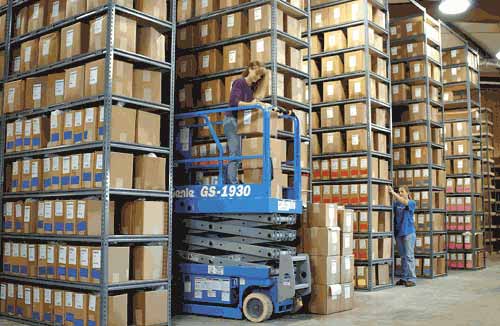Small Business
2017 Reviews of Inventory Management Systems
While inventory management is not a new concept, with the advent of online stores to coincide with their brick and mortar counterparts, it’s more important than ever that retailers have a solid handle on their inventory. Good inventory management is ...
Sep. 18, 2017

In the retail business, short of going out of business, there is nothing worse than missing out on a big sale because you ran out of a product. Having an item on backorder is a guarantee that your customers will simply locate another business that does have the item in stock and purchase it from them.
Running out of an item isn’t the only issue that retailers face daily. Nearly as bad as running out of an item is having multiple warehouses full of inventory stock that has not moved in months. Yes, buying too much of any item can be just as detrimental to the retailer as not buying enough.
That’s why inventory management is so important. While inventory management is not a new concept, with the advent of online stores to coincide with their brick and mortar counterparts, it’s more important than ever that retailers have a solid handle on their inventory. Good inventory management is about much more than simply tracking sales and product counts. A good inventory management program provides retailers with the ability to track item movement and popularity, monitor returns, forecast sales based on past inventory movement, and track inventory costs, both for individual items, and for those that are assembled using a variety of components to create the finished product. Inventory management helps retailers by reminding them to reorder a product when stock levels drop below a certain point, or that Item ABC has not sold in months, so reordering is not recommended.
Tracking inventory isn’t just for retail businesses. Manufacturers need to track inventory just as closely, ensuring that the vital components that make up their finished product do not run out of stock. If reordering just a single component is overlooked, a manufacturer cannot offer a finished product to its customers, running the risk that like the retailer, the customer will simply go elsewhere to obtain the product.
Keeping track of inventory also reduces or eliminates the threat of theft, and provides retailers with a mechanism to track sales levels and see what products are selling, and what products are not selling. Having this information at their fingertips allows retailers to make sales decisions based on inventory movement, such as reducing prices on a product that has not sold well, and making sure that reordering systems are in place for items that are hot sellers.
Along with tracking inventory, there is a need for all types of businesses to track in-house inventory, or assets such as laptops and machinery that are typically checked out by an employee, and later checked back in.
In this issue, we looked at a variety of inventory management software products. Some were designed to track business assets and inventory, while others are designed to perform traditional inventory management functions, such as inventory movement, inventory history, and levels, while also tracking inventory costs, and multiple pricing levels.
The products we reviewed in this issue include:
- Acctivate Inventory for QuickBooks
- AdvancePro Supply Chain Management
- Asset Panda
- EZ Office Inventory
- Fishbowl
- InFlow
- OfficeWise
- Wasp Barcode
- Zoho Inventory
Inventory Apps:
We also looked at two Inventory apps; Canvas, a repository of inventory and related apps that users can try out for 30 days prior to purchasing, and SOS Inventory, which is well suited for smaller businesses that currently use QuickBooks Online.
In each of these products, we looked for certain features including deployment methods, such as on-premise or cloud, the availability of mobile apps, basic asset and inventory tracking functionality, barcode printing and labeling capability, kitting capability, multiple pricing levels, volume pricing and discounts, and integration with shipping vendors, e-Commerce platforms and shopping carts. A handy chart is available that highlights these and other features available for each of the products.
Inventory management software is not an option for today’s retailer; it’s a must. Luckily, the choices available today are better than ever before. Take a look at these products and visit their websites – many of the vendors offer a free demo, so users can try out the product prior to purchasing. With product pricing ranging from free to several thousand dollars, there is sure to a product that is suited for your client’s finances and inventory needs.
